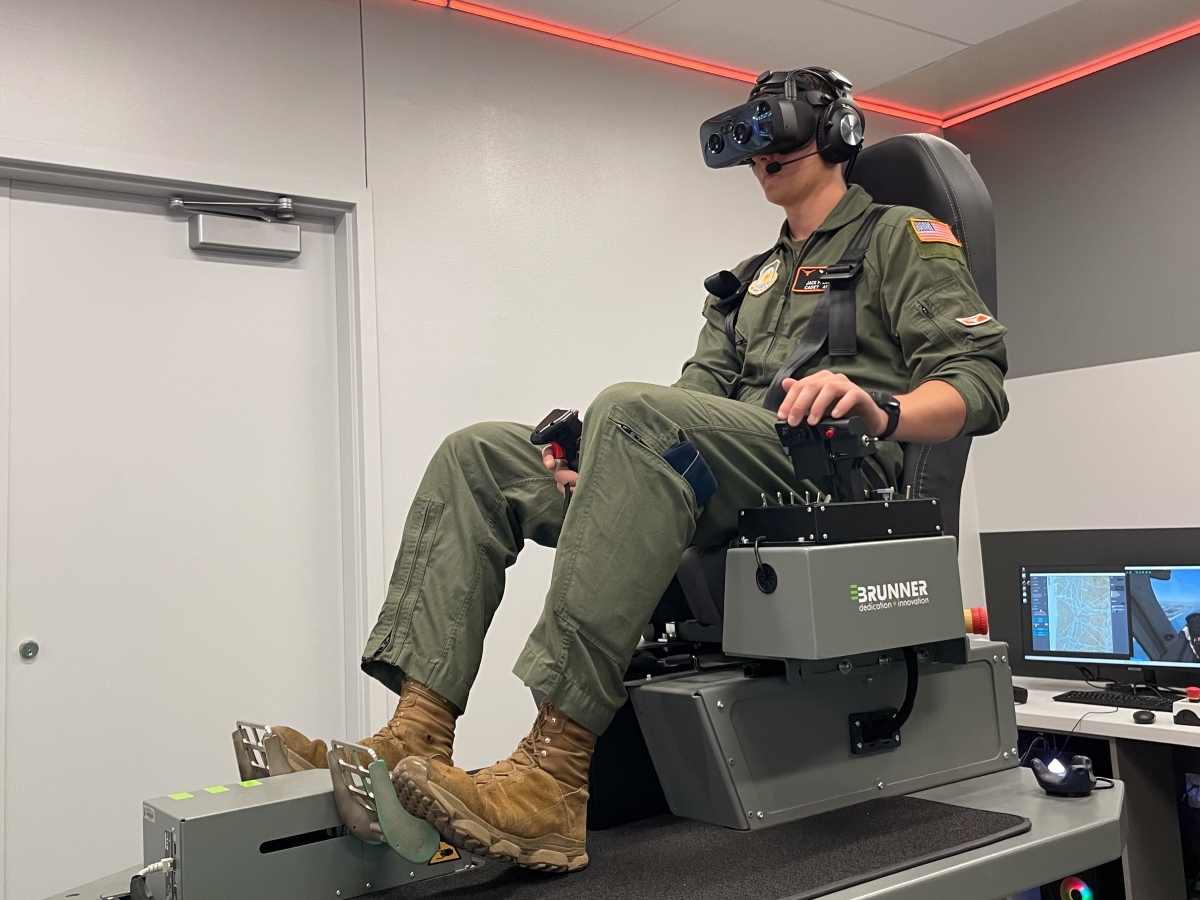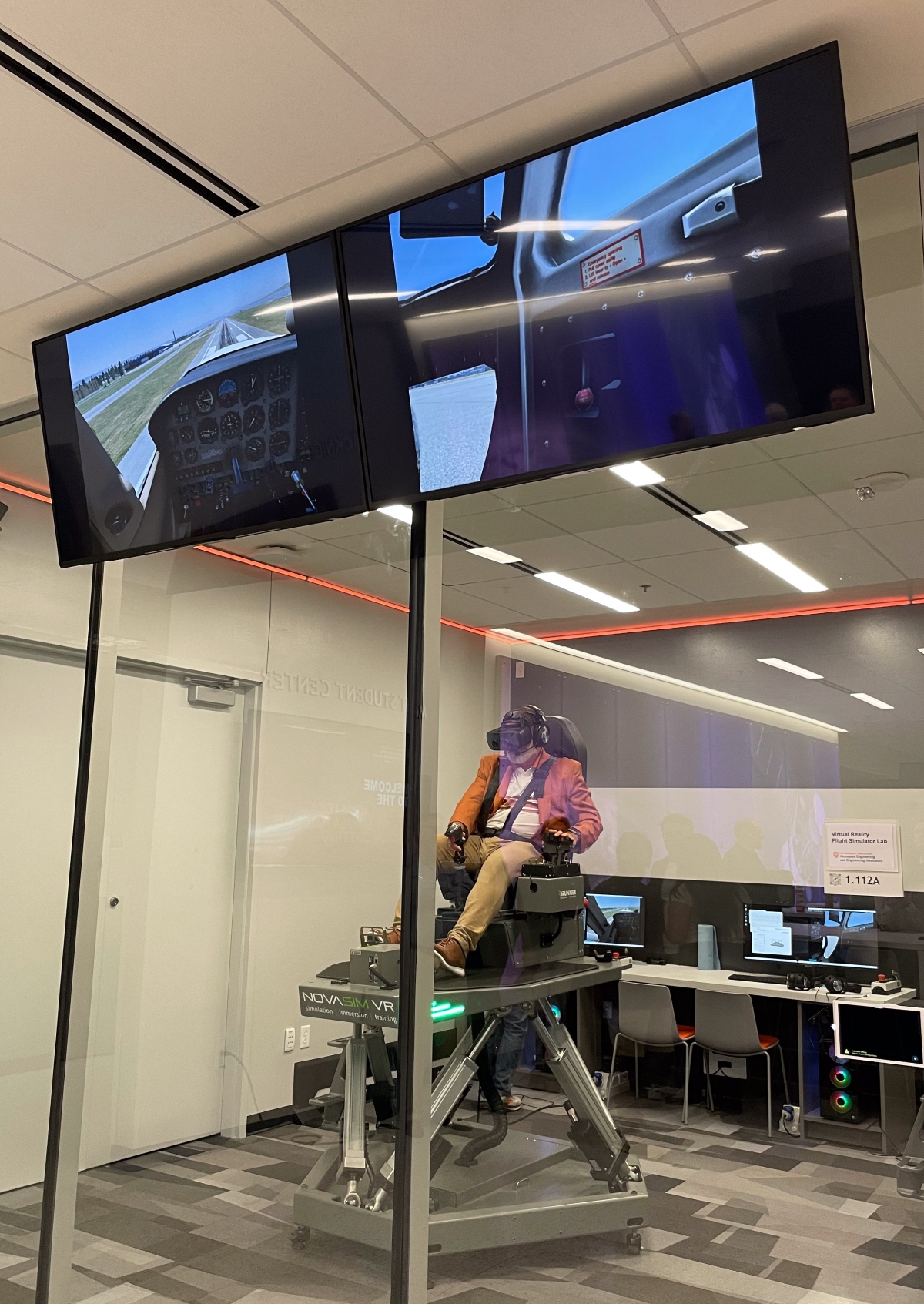New Virtual Reality Training Experiences Take Flight
New virtual reality flight simulators give aerospace engineering students hands-on flight experience.

Aerospace engineering student and ROTC pilot Jack Lasater demonstrates the new virtual reality flight simulators.
A pair of virtual reality flight simulators will provide students in the Department of Aerospace Engineering and Engineering Mechanics with a unique opportunity to hone their skills in designing and piloting various types of aircraft.
The department is now among the first in the nation with this type of equipment, providing students with hands-on experience as they prepare for careers in the aerospace industry. Faculty and students in the department showcased this equipment last week at a ceremony in a newly redesigned room on the ground floor of the Aerospace Engineering Building.
“By providing these experiences, the students will be able to better connect with their learning and their classes and how aircraft actually fly,” said Clint Dawson, chair of the department.

Alumnus Dan Deans tries out the flight simulator.
The flight simulators, one donated by alumnus Dan Deans and another purchased by an incoming faculty member, take up less space and are more customizable than other options. While several universities around the country have similar equipment, they’re mostly used for research and not coursework. The simulators at UT are already being used as part of a senior design course led by Professor of Practice Greg Zwernemann, and more classes and research groups will start to use them over time.
“It’s a tremendous way for students not only to learn the dynamics of flight, but to build time and get behind the yoke so to speak,” said Deans, a certified pilot and aerospace executive who currently serves as president and CEO of MORI Associates. “It’s a very important training tool and something that every aerospace department should have in my opinion. I’m really glad to be part of this, it is super exciting.”
The two Novasim flight simulators from Brunner sit on top of small platforms in the glass-encased room. On the outside of the room are monitors that allow anyone watching to see what the virtual pilot sees through the VR headset. As the aircraft moves, the platform shifts, allowing the user to feel any sudden shifts.
Typical flight simulators require large spaces to accommodate multiple screens and can feel more like a video game than an authentic flight experience. The VR equipment can simulate more types of aircraft, with a variety of options for virtual interfaces as well as real-life equipment like joysticks.
“Technology has improved so much, and it is so realistic now,” said Deans, who got his bachelor’s degree in aerospace engineering in 1990 and spent a lot of time on an older flight simulator in the W.R. Woolrich Laboratories building. “I love that we have a high-end simulator that the students can hop on and get to know the dynamics of flight.”
